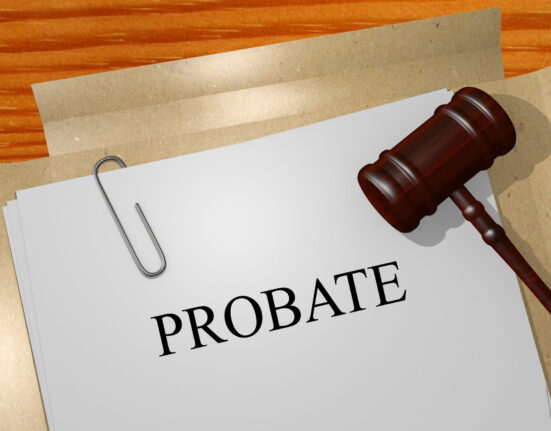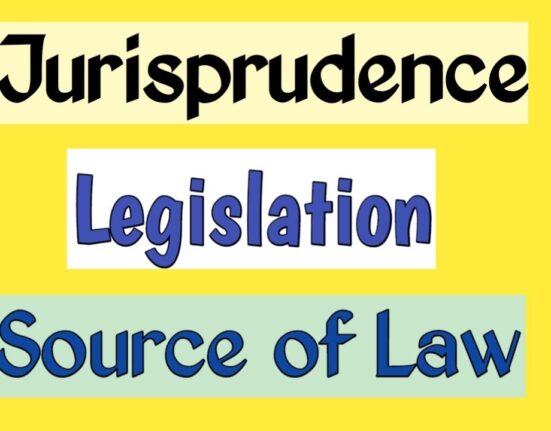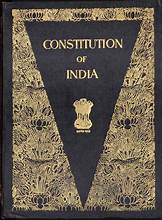By: Jithendran. S, Government Law College, Thrissur, Insanity Plea IPC : Need To Reform
“Nothing is an offense which is done by a person who, at the time of doing it, by reason of unsoundness of mind, is incapable of knowing the nature of the act, or that he is doing what is either wrong or contrary to law.”[1]
This is section 84 of the Indian penal code (IPC), these few lines carry with it the oldest criminal defense known to mankind, the insanity defense. Recognized by all developed legal systems in the world, the insanity plea is also shaped by every country it touches. Changes being made according to need of the land it touches, like a shore gives shape to the sea. We will examine the kinks in its armor and the needs of today it needs to meet.
The ‘common’ law problem
The insanity defense has come a long way from it’s mention in the code of hammurabi to the development of a separate field of study known as forensic psychiatry. From the time it was used by the ancient Greeks and Romans there was no distinction between criminal behavior and mental insanity over the years even the common man has grown to understand that the both are distinct possibilities but what is happening in our courtrooms.
The concept of insanity as a defense was established in arnold’s case [2]. It was further developed in Hadfield[3], then came the famous m’cnaghten[4] case and with it the most famous legal insanity test the m’naghten rules. After that many tests came some were created to cover the loopholes left behind by the m’naghten rules the most famous among them are the Durham test, the product test and the ALI test. But still the m’naghten rules have outlived its successors and still proves to be the most commonly used in almost all commonwealth and non-commonwealth countries. But where does the m’naghten rules fall short, where does it fail to deliver justice.
The most common criticism levelled towards the test is that the word “disease of mind” in a medical and legal sense includes non – mental ailments also. The rules cover many common ailments such as epilepsy, diabetes and sleepwalking and the rules do not cover a wide range of mental ailments such as psychopathy and sociopathy. But we will get to that matter later in this article. There is also another prominent argument raised by decorated jurists and legal personalities and that is the question of moral responsibility.
As cited in the mcnaghten rules as a defendant should not know that what he was doing was ‘wrong’. This ‘wrong’ only seems to be taken in the legal sense not in the moral sense. This aspect gave birth to the debate of moral and legal responsibility.
A person having mental illness may know that the act he is doing contrary to law but he still takes part in the said act because the act itself is not contrary to his morality. Therefore a person who has gained a twisted sense of morality can very well take part in an act knowing it is contrary to the law of the land. Therefore the defendant can lack the sufficient mens rea to hold him culpable.
This problem was exposed in R v. Windle[5] where the defendant killed his suicidal wife by giving her 100 aspirin tablets and when the police arrested him he told them “he supposed he would be hanged for it”. The defendant was diagnosed with a form of communicated insanity known as folie a` deux. But since the defendant knew that what he was doing was contrary to law the court took on a strict approach. For the defendant even though he found the act he had done was illegal he never found it immoral. This factor was disregarded by the court.
This judgement was found flawed in a number of occasions as in stapleton[6] The high court of australia found the judgement of windle wrongly decided as the question was whether the defendant knew what he had done was wrong as in the rational sense of an ordinary man. In chaulk[7] the supreme court of canada observed wrong must mean more than legally wrong. As Moore observes only individuals who can appreciate moral principles can be seen as rational and only rational moral agents can be responsible in law[8].
The both wide and narrow scope of diseases
As we seen earlier the tests employed by the courts not only the McNaughton tests but also the Durham and alI test include a wide range of physical anomalies as disease of mind at the same time not including ‘real’ disease of mind.
Following the mcnaghten rules in R v. Kemp[9] the court ruled that arteriosclerosis was a disease of mind for a case where a man killed his wife with a hammer. It is clear that disease of mind does not distinguish between body and mind, in a sense stupidity can even be raised in defense.
In Bratty[10] psychomotor epilepsy was qualified as a disease of mind in the case a man strangled to death a 18 year old girl. The basis of such observation was that this condition can cause problems in rational decision making. Psychomotor epilepsy was also observed as a mental disease in sullivan[11].
Also Read: HOW TO FILE SLP IN SUPREME COURT ?
In Hennessy[12], the defendant robbed a motorcycle. The defendant was a diabetic patient who had failed to take his insulin injection for two or three days. Hyper blood sugar was found to be an internal factor so therefore a mental disease. The law has a fair share of judgements regarding diabetic conditions. In quick[13], the defendant was a nurse who assaulted his patient. He was diabetic who had taken insulin but did not consume any food to neutralize it, he instead drank alcohol to do so. This led him to a state of hypoglycemia. The court observed this was an external factor and directed the defendant he cannot claim mental illness. This may seem bizarre While a defendant who completely neglected his condition by not taking his vital medication for three days is eligible to claim mental illness while the person who didn’t eat properly cannot. It is clear that the law has no clear cut answers for these kinds of situations.
Even while including these ailments in the spectrum of disease of mind the real problem lies within the exclusion of certain other ailments. A most prominent mental abnormality of our time is delusions and hallucinations. These conditions arrive as a symptom of schizophrenia, which is the most common spectrum of mental diseases. According to the traditional approach of our courts, in case of hallucinations and delusions. It is hard to analyze the various mental progressions through which a convict comes. So a very extensive test is needed to conclude whether the hallucinations pushed the individual to commit an act he otherwise wouldn’t have. In Gopalan nair v. State of kerala[14], the court didn’t allow insanity even when there was valid medical proof of delusions (proof as much our indian courts allow). This is testament on the part of the court not considering delusions or hallucinations a valid mental impairment.
The m’naghten rules only take into account a type of psychology known as ‘faculty’. This mode only takes into account :
- Reason
- Emotion
- Conation
But as it is observed medically there may be no connection between delusion and conduct. The windle case was an example. He acted rationally in a sense he knew it was contrary to law, it was his objective to do something contrary to law so that he could be hanged. This was due to his delusions. In the while in contrary the court in phulabai v. State of Maharashtra[15], there was no medical evidence to corroborate the claim of insanity. But the court granted it on the ground of ‘common sense’. Even Somnambulism is also a valid disease of mind as observed in pappathi ammal case[16]
The question of psychopathy : The issue of psychopathy, sociopathy and other conditions falling under the anti-social spectrum and their legal relevance deserves a whole new article of it’s own. The conditions falling inside the anti-social spectrum are complex medical and legal problems. Psychopaths have no human instincts which makes them handicapped in reasoning so, therefore mentally ill. Psychopaths very well know the illegality of their act, but their condition impairs their cognitive abilities leading to a state where they cannot distinguish the wrongfulness of the act. In a medical sense psychopaths suffer from brain region working abnormality but these internal factors are not considered to fall under the purview of legal insanity. The main argument raised by those who oppose psychopathy from being included in the insanity plea is that it can put the society in danger. Law has yet to find a solution around this problem.
The result of this problem is seen in statistics. The insanity plea is the most less used defense with the most low success rate. This seen especially in countries where the death penalty is abolished. Serving a finite sentence is more desirable than an indefinite time in psychiatric care. But the insanity plea is not fully out of hope as some elements of the plea are still utilized very commonly.
Diminished responsibility, Automatism and Irresistible impulse
These are the most common modern day applications of the plea, even though they do not grant full pledged immunity like the insanity plea. They can serve as a sufficient deterrent to long jail sentences.
Diminished responsibility is a fully recognized defense in a sense since it has no particular legislative support in the majority of places it is applied. Diminished responsibility has been given shape and structure by judgements. It encompasses even a wider scope of then insanity plea itself so it is favored by people more than insanity defense. The diminished responsibility principle will only fall in theory if it is proven that the mental state has no impact in the crime committed. The problem faced in this aspect is the fluidity of the principle, the need for law making is urgent in order to avail these principles to those who deserve it and to take it away from those who don’t. I will give an example to the matter.
The 2000 dharmapuri bus burning case[17], the facts of the case are such that during a protest staged by AIDMK members after the conviction of their leader jayalalitha. The party members sprinkled petrol inside and outside a bus carrying female students of TNAU and set it on fire. After a long line of trials confirming the death sentence for the prime convicts. The supreme court of india which initially upheld the death sentence on a review petition commuted it to life sentences. The commutation was based on the argument put forward by the defense counsel that the act was done in a “state of mob frenzy”. The apex court applied the principle of diminished responsibility. This commutation and the application of diminished responsibility was criticized by many on the point that in order to apply diminished responsibility the conduct of the accused before and after the act must not contain an element of planning. The other aspect was that the accused should have a history of mental illness. These conditions where observed to be necessary in walton v. queen[18]. The supreme court itself said that the crime was planned, barbaric and abused the right of peaceful assembly. The accused had bought petrol on seeing the parked bus and after setting it on fire left the scene on motorcycles. The case was shrouded in controversies due the missing of important files, the sudden change of venue and matter of 20 witnesses becoming hostile. The case had a high impact in the social and political sphere especially due to the early release of the convicts by the AIADMK government before serving full jail time.
The other popular defense is of automatism which is of two types: Insane automatism and sane automatism. The condition refers to a state when rational functioning of the mind ceases and the body ceases to obey the mind. In charlson[19] the jury reached the verdict of non-guilty for the accused after he beat to death his 10 year old son and threw him in the river. This is due the fact that the accused was suffering from a cerebral tumor which can cause a sudden outburst of anger, thus the defense of non-insane automatism was taken up. It was observed in hill v. baxter[20], that if there is a sudden loss of consciousness the accused is safe to be acquitted. The defense of automatism is now appearing to be an attractive defense doesn’t it, the line between sane and insane automatism is blurred and I mean very blurred. It is hard to determine whether the factors causing the criminal act are internal or external and thereby sane or insane automatism.
The last and certainly not the least is the defense of irresistible impulse. The sudden flow of violent impulses can rob the body and mind of its rationality this the base of this defense in simple words. the most famous use of the defense is in the infamous lorena bobbit case[21]. Like diminished responsibility the defense of irresistible impulse is not recognized in a legislative sense. This is due to the notion that it is impossible to draw to conclusion on how irresistible the impulse is. In kannakunnummal ahmedkoya v. State of kerala[22], the court observed that loss of self control due to an irresistible impulse is no defense. The court cannot reach another conclusion from standing on the grounds of our conventional insanity tests especially the mcnaghten rules because they ignore key psychiatric concepts. As in ganesh shrawan case[23], it was observed even if the act was committed out of irresistible impulse and there is no identifiable motive. It still does not form grounds of a valid defense.
The 42nd report of the law commission recommended to provide when the impulse is too strong to resist by the individual will and even when he knows the act is contrary to law. This recommendation was rejected on the notion that if accepted it will place heavy reliance on medical reports and the availability of medical experts at the district level may create practical problems. This lack of medical experts and expertise in the field of psychiatry in India is a problem which received very less attention which we will go through soon.
The need of legislative backup of these above stated principles is necessary to once again bring back the oldest criminal defense in the world back to its glory, In order to meet the ends of justice.
The Indian scene : Forensic psychiatry
We can go through problems which need urgent attention but on the contrary have received very few attention from the legal community. Let’s look into some figures and statistics which show how India decides its insanity pleas[24].
It showed from the data that verdicts of lower courts depended upon documentary evidence of mental illness prior to the crime and psychiatrist opinion. The most common crime was murder as (as murder carries a death penalty). The most common relation with the victim was wife and the second common one is first degree relative. The most diagnosed mental disease was schizophrenia. Women were only 3% of the total number who pleaded insanity, another interesting fact is that women enjoy more success in insanity pleas. These factors have sparked an opinion that the law plays a role in enforcing sexual stereotypes.
The study highlighted some core issues they stumbled upon. It was evident the importance of documenting the various processes of treatment by doctors. But in a poor country like India where a strong social stigma exists against mental health issues. There is a lack of access to psychiatric facilities and unscientific religious practices are used, also the use of Ayurveda to treat mental disorders gives a result that documentary evidence is only available to the elite.
There is reliance on psychiatric opinion but there is still no rigid framework for gathering and evaluating psychiatric evidence and opportunity for psychiatric evaluation. The study also pointed that for those who had psychiatric help before crime, there was a duration of spanning from one day to 6 months(mean duration being 275.2 days) the time of commission of the act and the last psychiatric visit. In most cases the psychiatrist was new to the accused(41 of 67 cases) that states that most accused had no prior access to a doctor. One interesting statistic in the study is that in case of insanity pleas in India the higher court was very less inclined to alter the verdict reached by lower court in the instance of an appeal.
It is not only the Indian psychiatrist that see there is urgent need for reformation in the field of forensic psychiatry. The Gujarat high court in the Bolabhai hirabhai case[25] acknowledged the power of forensic psychiatry in the administration of justice. It also acknowledged that forensic psychiatry is not yet gainfully employed in the administration of justice. The court stated that in court of law the only aspect that has drawn interest is the criminal responsibility that arises from the unsoundness of mind. The learned opinionated that the court should ask whether the person in this same condition might have committed the same act if he had emotional balance, average intelligence and appropriate perception. It should also examine whether the state of his mind was powerful to negate the above factors. The high court also gave great value to dr. Agarwal who had given his expert opinion as a defense witness. The doctor had 18 years experience in the field of psychiatry along with clinical experience. It also criticized the trial court for not giving the doctor’s opinion its deserved value. The court also criticized the insufficiency of the mental health act,1987.
Citing a another study[26] which travelled more deeply into the matter how psychiatry should be applied in courts along with providing guidelines to psychiatrists and the legal community. The study put forward the urgent need of establishing centers to provide forensic psychiatric training and clinical services. The study draws justification for this need by citing that 79.6% of prisoners (from a total number of 5024) had mental illnesses or substance abuse. Excluding substance abuse 27.6% suffered from diagnosable mental disorder.
The study also provides guidelines to abide by ordinary psychiatrists who were called forth to act as forensic psychiatrists. It observed that it was the duty of the psychiatrist to educate the court in psychiatric issues, provide honest and objective opinions based on factual data and sound reasoning. The psychiatrist should check into the history of presenting illness, past medical history, family and personal history, premorbid personality and substance abuse. The psychiatrist should try to get a detailed account of the crime through open ended questions to draw a clear picture of the mental status of the defendant at the time of offense. A detailed inquiry should be conducted into his cognition, behavior, emotions and perception before, during and after the incident. The degree of knowledge of the accused about law and the nature of the act committed should be ascertained. If required cognitive functioning assessment should be done with open questions without employing leading questions.
The suggestions put forward by the study are:
- As of the current scenario there are no formal graduation courses or institutes in forensic psychiatry in india. There is a urgent need to establish educational institutions of such nature to meet the need of the times we are living in
- Judicial officers, police officers, correctional officers and human rights workers should be given training or basic education in the relevant concepts of forensic psychiatry
- Prison mental health centers should be started
- The service of a forensic psychiatrist should be secured in district level hospitals. This arrangement can ensure access to the services that are already ensured by the CRPC[27]
- To revisit and do systematic research into the principals of diminished responsibility and irresistible impulse
To conclude and to sum up in simple words, standardized procedure for evaluation of those who plead insanity does not exist. But is there no bright side in our system, yes there is. India aimed at major reformation in the area of rehabilitation of the criminally insane through the new mental healthcare act 2017[28] (which had decriminalized suicide). This new act which came into force in 2018 replaces the mental health care act 1987[29]. This act houses major changes such as prescribing guidelines and controlling the use of electroconvulsive therapy. It also guarantees that mental illness will be determined according to international accepted standards. The act also touches on the stigma existing around mental health in India.
This act offers a good start towards an even better change. But the issues which exist around the insanity plea still continue to exist in both national and international levels. It is widely observed that the insanity plea is better functioning in countries which have an inquisitorial criminal justice system then the countries having adversarial criminal justice systems. Still in Scandinavian countries the plea is handled more effectively by passing it through a board consisting of persons from judicial, psychiatric and human rights background.
The problem of the human is no way simple especially when it is applied to law, the human race is still clueless about its own mind. The only possible solution to see a better future for mankind’s oldest defense plea is to integrate the advances in both science and law.
[1] THE INDIAN PENAL CODE,1860
[2] Arnold’s Case (1724) 16 St.Tr. 695.
[3] Hadfield’s Case (1800) 27 St.Tr. 1281.
[4] Daniel M’Naghten’s Case (1843) 8 ER 718.
[5] R v Windle [1952] 2 QB 826. Insanity Plea IPC , Reform
[6] R vStapleton (1952) 86 CLR 358.
[7] R v Chaulk [1990] 2 CR (4th) 1.
[8] Moore, M., Law and Psychiatry: Rethinking the Relationship, (1984), p.244
[9] R v Kemp [1957] 1 QB 399.
[10] Bratty v Attorney-General for Northern Ireland [1963] AC 386.
[11] R v Sullivan [1984] 1 AC 156.
[12] R v Hennessy [1989] 1 WLR 287.
[13] R v Quick [1973] QB 910.
[14] AIR 1973 SC 806, 1973 CriLJ 583
[15] 1976 CriLJ 1519
[16] AIR 1959 Mad 239
[17] https://en.m.wikipedia.org/wiki/2000_Dharmapuri_bus_burning
[18] 166 CLR 283
# Insanity Plea IPC Reform Insanity Plea IPC Reform Insanity Plea IPC Reform Insanity Plea IPC Reform
[19] R v Charlson [1955] 1 WLR 317.
[20] Hill v Baxter [1958] 1 QB 277.
[21] https://en.m.wikipedia.org/wiki/John_and_Lorena_Bobbitt
[22] 1967 CriLJ 494
[23] 71 BOMLR 643
[24] Parthasarathy Ramamurthy, Vijay Chathoth, and Pradeep Thilakan;How does India Decide Insanity Pleas? A Review of High Court Judgments in the Past Decade
[25] (2000) 3 GLR 242
[26] Suresh Bada Math, Channaveerachari Naveen Kumar, and Sydney Moirangthem;Indian J Psychol Med. 2015 Oct-Dec; 37(4): 381–387
[27] The Code of Criminal Procedure 1973
[28]http://www.prsindia.org/uploads/media/Mental%20Health/Mental%20Healthcare%20Act,%202017.pdf
[29] http://wcdsc.ap.nic.in/documents/acts_dw/Mental_Health.pdf
# Insanity Plea IPC : Need To Reform Insanity Plea IPC : Need To Reform Insanity Plea IPC : Need To Reform Insanity Plea IPC : Need To Reform







Leave feedback about this